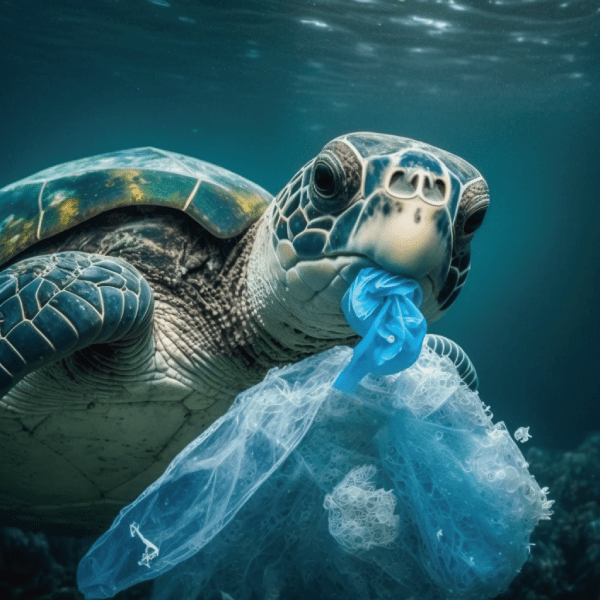As consumers become more environmentally conscious, businesses are feeling the pressure to develop sustainable packaging solutions. Traditional packaging materials such as plastics and non-renewable resources are not only harmful to the environment but also contribute to climate change. Green packaging, on the other hand, is an eco-friendly alternative that addresses these issues.
In this blog post, we’ll discuss the nature of the problem, available solutions, different materials and technologies in the production of green packaging, and the connection with the circular and sharing economy.
Nature of the problem
The production of traditional packaging materials has a significant environmental impact because it contributes to various environmental problems, including pollution, waste, and climate change. Plastic waste, in particular, is a significant concern, as it can take hundreds of years to decompose, causing it to accumulate in the environment, including oceans and marine life.
This accumulation of plastic waste in the ocean harms marine life, leading to the death of marine animals, ingestion of microplastics, and the reduction of biodiversity.
The production of these traditional packaging materials requires the use of non-renewable resources, such as fossil fuels, minerals, and water, which contributes to resource depletion and climate change.
The extraction and processing of non-renewable resources often involve the use of fossil fuels, leading to greenhouse gas emissions, air pollution, and water contamination. In addition, the transportation of these materials from their source to the manufacturing site also contributes to greenhouse gas emissions and air pollution, leading to the further exacerbation of climate change.
Solutions
Green packaging solutions offer a range of sustainable alternatives to traditional packaging that can help reduce the environmental impact of packaging. These solutions are designed to minimize waste, pollution, and resource depletion.
Here are some possible solutions:
- Biodegradable packaging: Biodegradable packaging is designed to break down naturally and safely into organic materials such as water, carbon dioxide, and biomass, reducing waste and pollution. These materials can include corn starch, bamboo, and paper, which are biodegradable and compostable.
- Recyclable packaging: Recycling is an essential component of sustainable packaging. Recyclable materials such as aluminum, glass, and paper can be used to create packaging that can be recycled multiple times, reducing the amount of waste generated. This also helps to conserve natural resources and reduce greenhouse gas emissions associated with the production of new materials.
- Compostable packaging: Compostable packaging is designed to decompose quickly and safely, turning into nutrient-rich soil that can be used to support plant growth. These materials can include natural fibers, starches, and paper, which are biodegradable and compostable.
Green packaging can be made from a variety of materials and technologies, including:
- Plant-based materials: Plant-based materials such as corn starch, potato starch, and bamboo are biodegradable and compostable, making them an eco-friendly option. These materials can be used to create a range of products, including food packaging, bags, and containers.
- Recycled materials: Recycled materials such as paper, cardboard, and aluminum can be used to create packaging that is recyclable and reduces waste. These materials can be collected and processed to create new products, reducing the need for virgin materials.
- Bio-based plastics: Bio-based plastics are made from renewable resources such as corn, sugarcane, and cellulose. These materials are biodegradable and compostable, making them a sustainable alternative to traditional plastics. They can be used to create a range of products, including packaging, bags, and containers.
Circular and sharing economy
The circular and sharing economy are important concepts in sustainable packaging because they promote the use of resources in a more efficient and sustainable manner. The circular economy is based on the principle of keeping materials in use for as long as possible by reducing waste and promoting recycling.
This can be achieved by designing products that can be easily disassembled and recycled, reducing the amount of waste generated. In the context of packaging, this means using materials that can be easily recycled or repurposed to create new products, reducing the need for virgin materials.
The sharing economy promotes the sharing of resources to reduce waste and promote sustainability. This can be achieved by sharing resources such as packaging materials, reducing the amount of waste generated and conserving natural resources. In the context of packaging, this means using shared packaging systems or reusable packaging that can be used multiple times, reducing the need for single-use packaging.
The application of circular and sharing economy concepts to green packaging can be achieved through the use of materials that are recyclable, compostable, or biodegradable. This means using materials that can be easily recycled or repurposed to create new products, reducing the need for virgin materials. It also means using shared packaging systems or reusable packaging that can be used multiple times, reducing the amount of waste generated and conserving natural resources.
Overall, the circular and sharing economy are essential concepts in sustainable packaging as they promote the efficient use of resources and reduce waste. By incorporating these concepts into the design and use of green packaging solutions, we can move towards a more sustainable future, promoting environmental stewardship and social responsibility.
Conclusion
Green packaging offers a sustainable solution to the environmental impact of traditional packaging materials. By using biodegradable, recyclable, and compostable materials, businesses can reduce waste and minimize their environmental impact.
The use of plant-based materials, recycled materials, and bio-based plastics can also help to promote a circular and sharing economy. As consumers become more environmentally conscious, businesses must adapt and implement sustainable packaging solutions to meet the demand for eco-friendly products.
Green packaging manufacturers
There are several innovative green packaging manufacturers around the world that are leading the way in sustainable packaging solutions.
Here are some examples of companies that are making a significant impact in this field:
- Ecovative Design: This New York-based company produces environmentally-friendly packaging materials made from mycelium, a mushroom-based material that is biodegradable and compostable. The company’s products are used by several large brands, including Dell and IKEA, and have helped to reduce carbon emissions by over 8 million kilograms.
- Loop Industries: Loop Industries, based in Montreal, Canada, is a leading innovator in the production of sustainable plastics. The company uses a proprietary technology to recycle low-value plastics into high-quality food-grade packaging materials. The company’s goal is to reduce plastic waste and create a circular economy for plastic production.
- Tetra Pak: Tetra Pak, based in Switzerland, is a leading provider of sustainable packaging solutions for the food and beverage industry. The company’s packaging is made from renewable materials and is recyclable, with over 92% of the company’s packaging materials being recyclable. In 2020, Tetra Pak launched a new packaging solution made from plant-based materials, reducing the company’s carbon footprint by 17%.
- Remeo Gelato: Remeo Gelato, based in Italy, produces sustainable packaging for its gelato products, which are made from 100% recycled plastic. The company’s packaging is also recyclable, helping to reduce waste and promote sustainability. In addition, the company has implemented a closed-loop system for its packaging, which allows the company to collect used packaging and recycle it into new packaging.
- Ecolife Recycling: Ecolife Recycling, based in Australia, produces biodegradable and compostable packaging made from sugarcane waste. The company’s products are fully biodegradable and compostable, reducing waste and promoting sustainability. In addition, the company’s packaging is carbon neutral, helping to reduce carbon emissions.
Overall, these companies are leading the way in green packaging innovation, creating sustainable solutions that reduce waste, conserve resources, and promote sustainability.
Their commitment to sustainability demonstrates that businesses can create successful and profitable products while also contributing to a better future for the planet.



